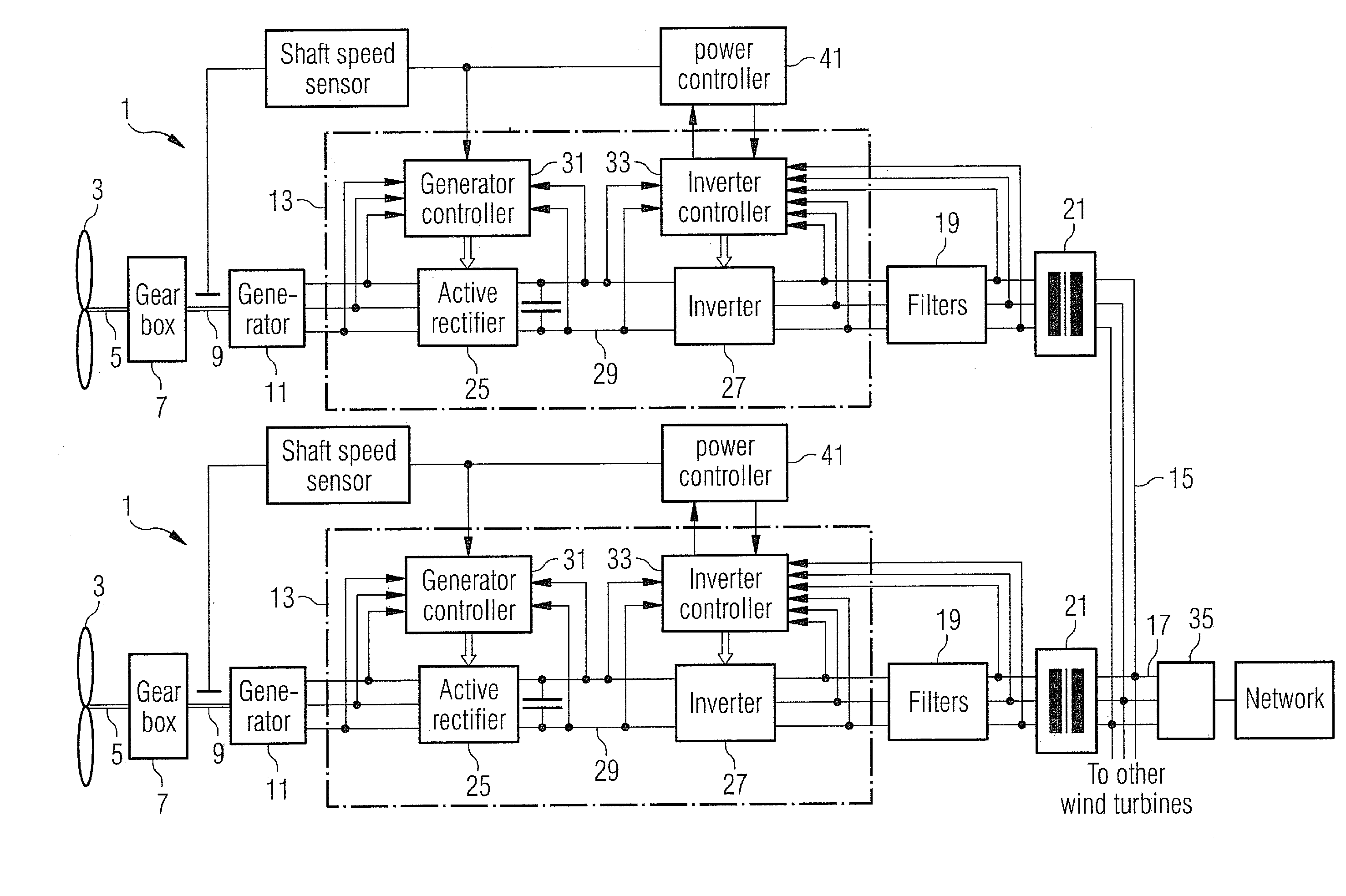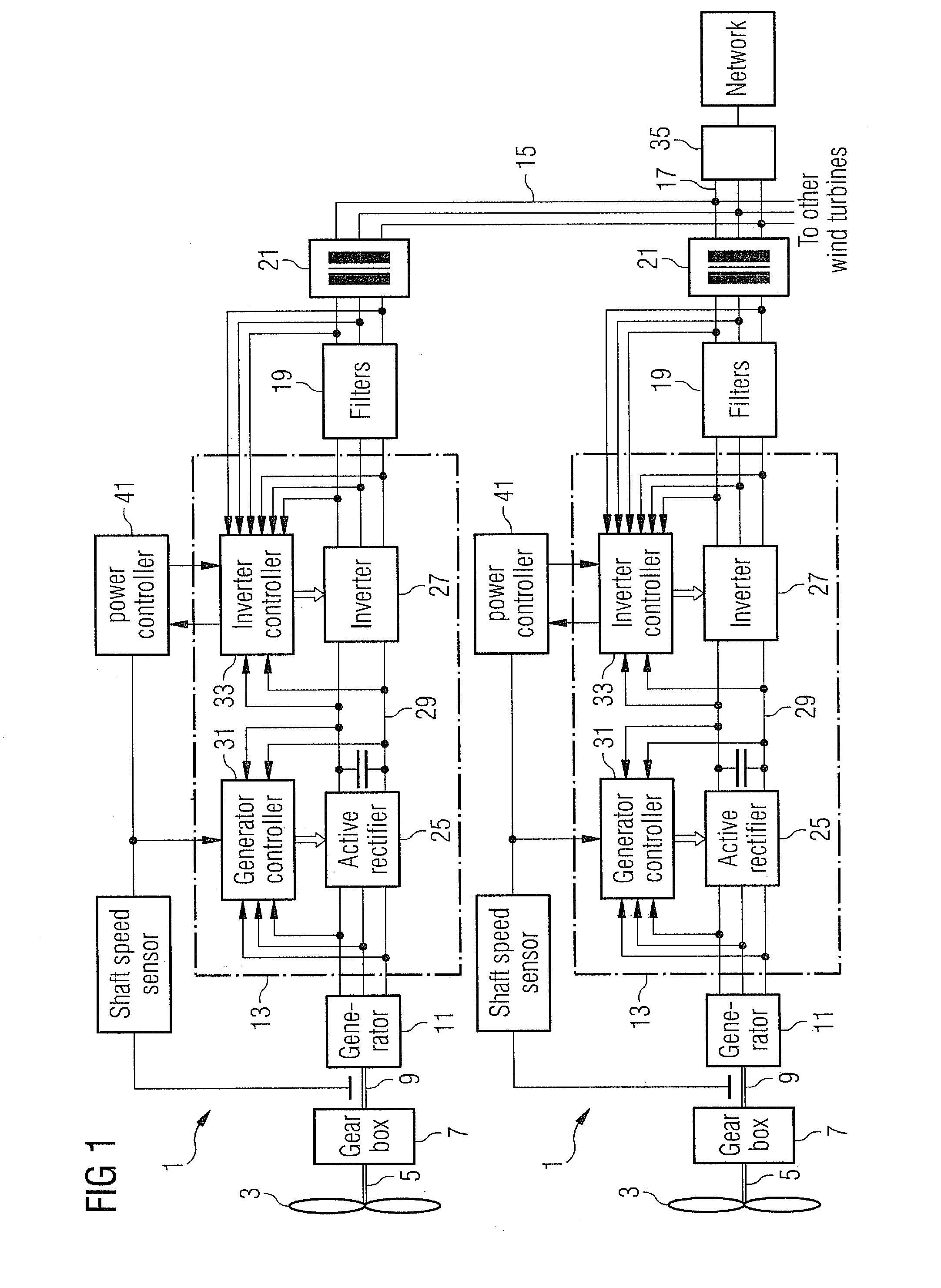Method of operating an inverter and inverter control arrangement
a technology of inverter control and control arrangement, which is applied in the direction of power conversion systems, ac network circuit arrangements, electrical apparatus, etc., to achieve the effect of increasing flexibility in defining thresholds and accelerating respons
- Summary
- Abstract
- Description
- Claims
- Application Information
AI Technical Summary
Benefits of technology
Problems solved by technology
Method used
Image
Examples
Embodiment Construction
[0051]FIG. 1 shows two of a number of wind turbines forming a wind farm in a schematic view. In particular, the Figure shows the electrical equipment of the wind turbines for controlling the generators and the power output.
[0052]Oftentimes, a number of wind turbines 1 are connected together to define a wind farm in which the wind turbines are connected in parallel to a wind farm transformer 35 by a collector cable 15. The wind farm transformer 35 is in turn connected to a nominally fixed frequency utility grid (labelled network in the Figure). Each wind turbine 1 is connected to the collector cable 9 through an input line reactor 19 and a wind turbine transformer 21.
[0053]Each wind turbine 1 comprises a rotor 3 with a rotor shaft 5 transmitting the rotational momentum of the turning rotor 3 to a gear box 7. In the gear box 7, a transmission of the rotation to an output shaft 9 with a certain transmission ratio takes place. The output shaft 9 is fixed to the rotor of an AC generator ...
PUM
 Login to View More
Login to View More Abstract
Description
Claims
Application Information
 Login to View More
Login to View More - R&D
- Intellectual Property
- Life Sciences
- Materials
- Tech Scout
- Unparalleled Data Quality
- Higher Quality Content
- 60% Fewer Hallucinations
Browse by: Latest US Patents, China's latest patents, Technical Efficacy Thesaurus, Application Domain, Technology Topic, Popular Technical Reports.
© 2025 PatSnap. All rights reserved.Legal|Privacy policy|Modern Slavery Act Transparency Statement|Sitemap|About US| Contact US: help@patsnap.com



